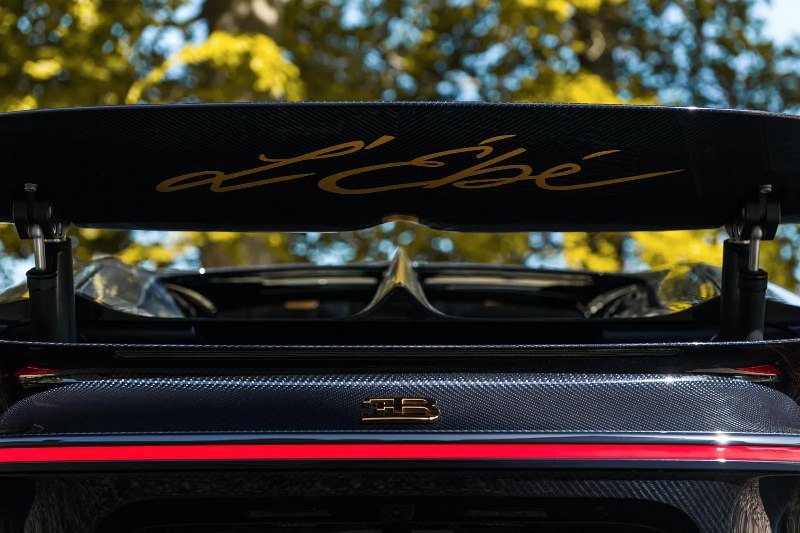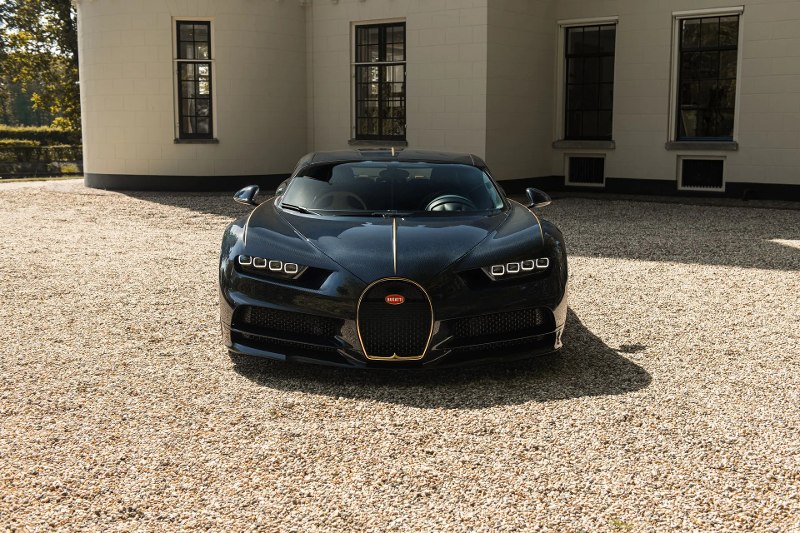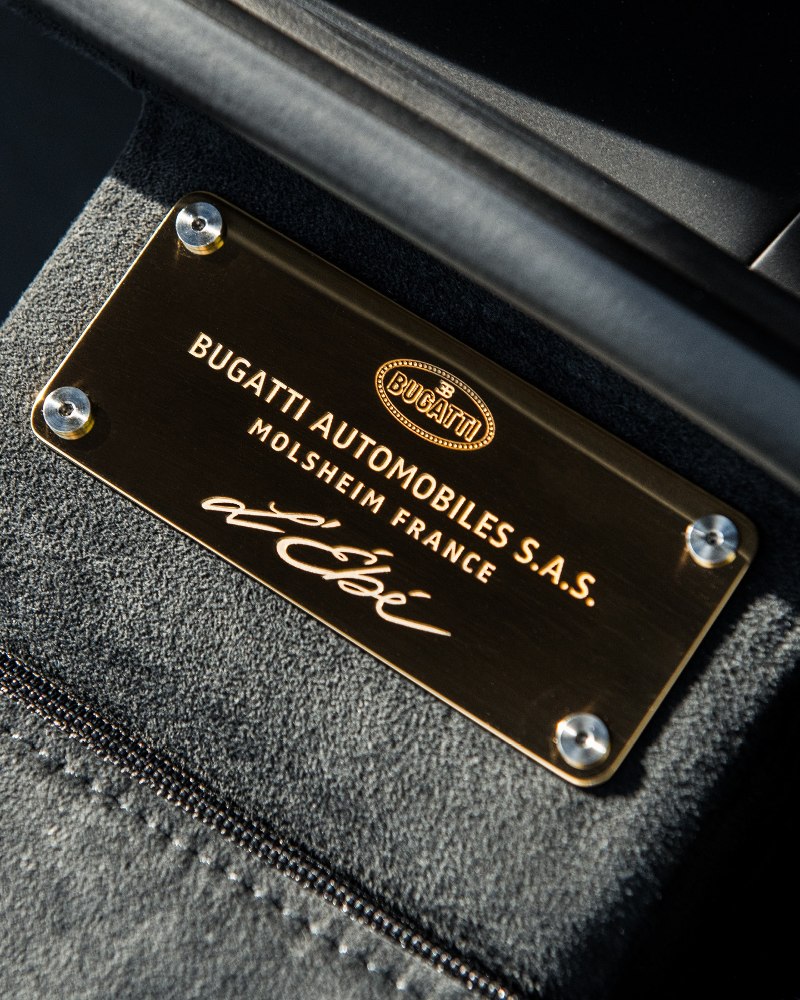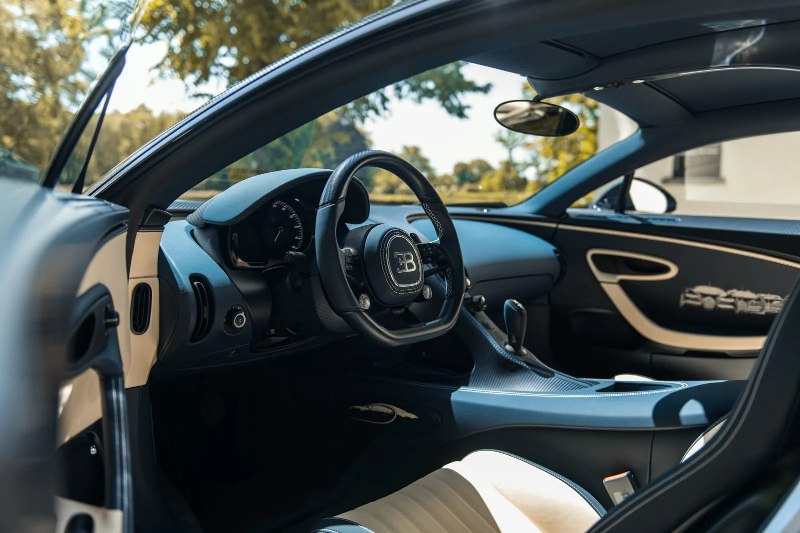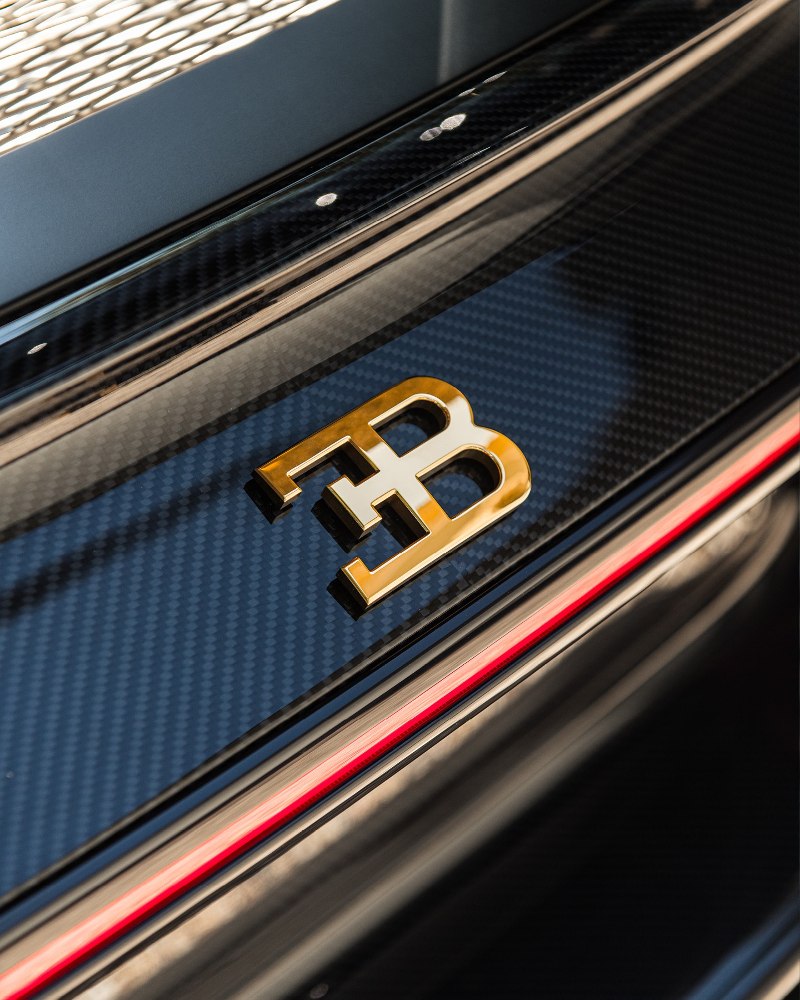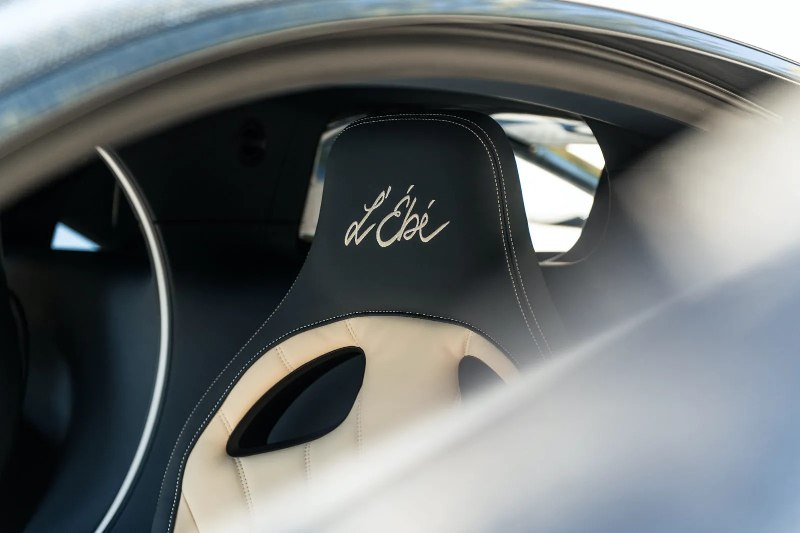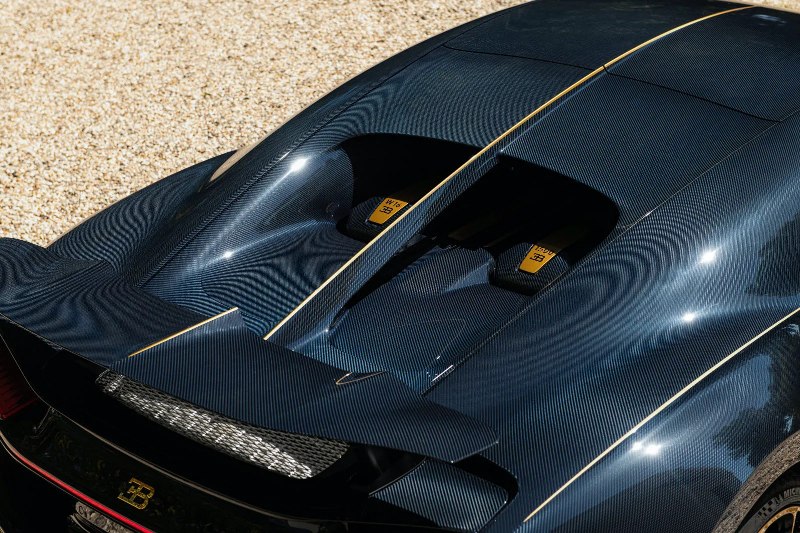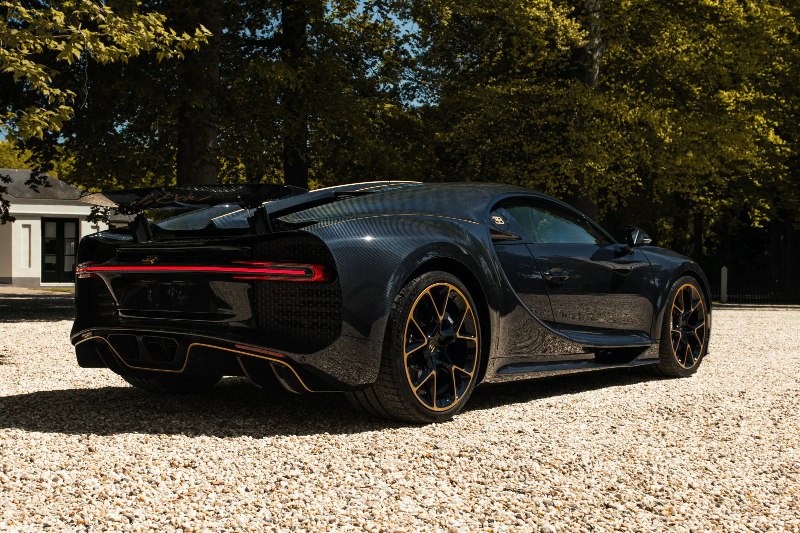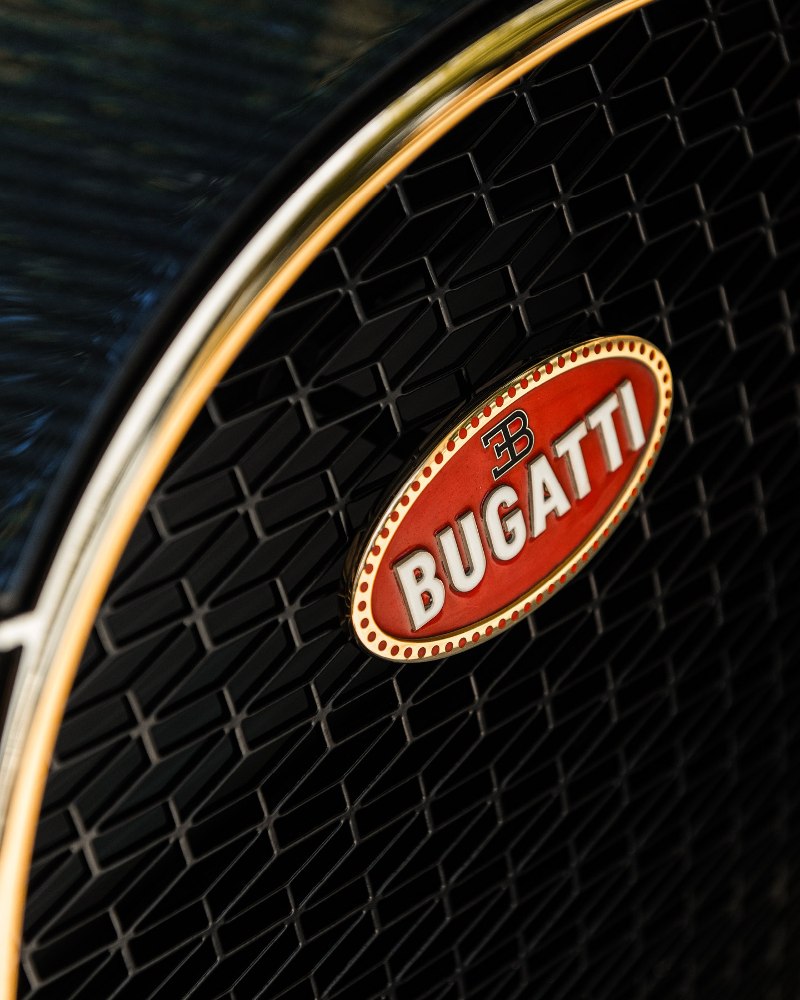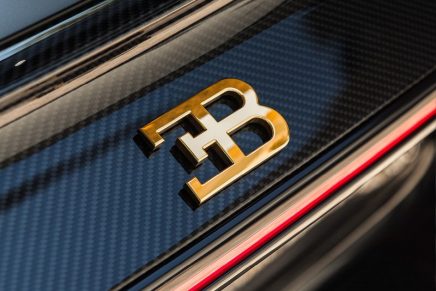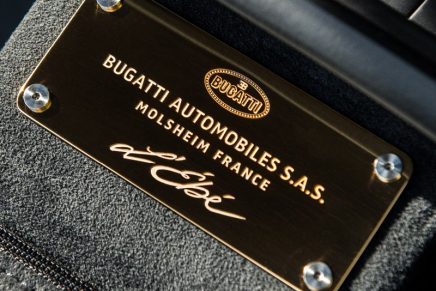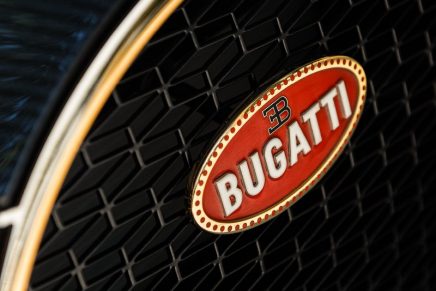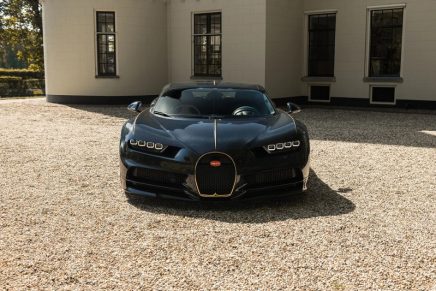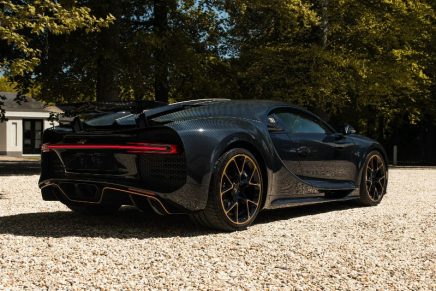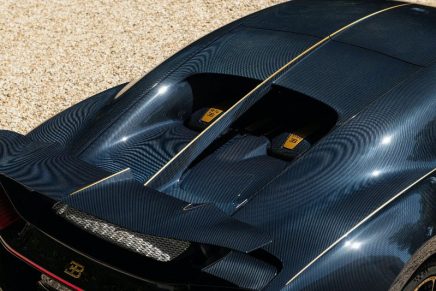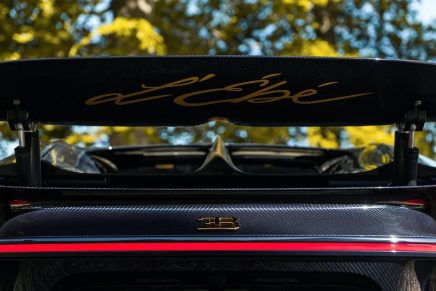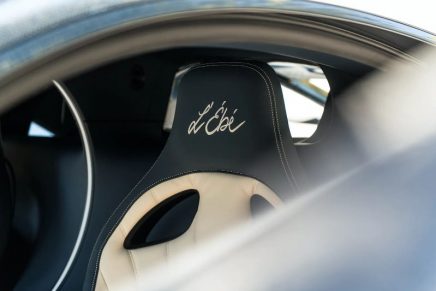Gold is one of the most precious materials in the world. It’s therefore the perfect fit for Bugatti. The 24-karat metal is rarely used in the crafting of automobiles, however, because the finest 99.9 percent gold is soft, extremely valuable, and tricky to work with.
Bugatti rose to this challenge and has applied a 24-karat gold finish, for the first time, to elements of the Chiron L’Ébé. It is also the first time that the famous Bugatti emblem has ever sparkled in high-quality gold on the horseshoe grille. Just three handmade hyper sports cars will bear a Macaron in this unique design inspired by the Art Deco style of the 1920s.
Bugatti and the Bavarian minting and embossing company Poellath GmbH & Co. KG together spent five years developing the new gold Macaron that now adorns the grille of the Chiron L’Ébé supercar. Only with extensive research and laboratory testing, numerous experiments, and passionate attention to detail did the two teams succeed in achieving the perfect result in this incomparable hand craftsmanship.
It is based on the solid 970 sterling silver Macaron that is usually found on Chiron models, and which is nickel-plated during a lengthy process. The material nickel serves as the foundation and corrosion protection for the gold finish which is subsequently applied. The experts apply a thin layer of gold measuring between three and four micrometers to the Macaron and then polish the part to give it a mirror finish. The process, which is performed predominantly manually, takes over ten hours.
“Our customers want the extraordinary. We are therefore always considering what fits well with the brand’s quality ethos and how we can implement it. With the gold Macaron on the horseshoe grille and the vehicle’s other gold elements, we can offer our customers something they can only get in this form from Bugatti,” says Hendrik Malinowski, Managing Director, Sales and Marketing, at Bugatti Automobiles. And to allow the gold elements to truly shine, Bugatti does without a clearcoat finish.
The idea of an oval shape for the emblem with white lettering on a red background came from Ettore Bugatti himself. Towards the end of 1909, the company founder applied an oval badge made from enameled metal to the radiator grille of the Bugatti Type 13. The idea was for it to be instantly recognizable as a Bugatti. The emblem consists of the name lettering with the initials “EB” above it (standing for Ettore Bugatti) and 60 red dots all around the edge. Legend has it that the 60 dots symbolize pearls, which stood for wealth and independence at the beginning of the 20th century. In truth, they were wires which served as cotter pins that firmly attached the mechanical parts to one another. For Ettore Bugatti, the reliability and durability of his automobiles were of great importance throughout his life. The Macaron has been modified only slightly over the years.
With the Chiron L’Ébé supercar, Bugatti has finished other exterior elements with gold in addition to the Macaron: the front horseshoe’s decorative trim, the “EB” emblem on the gas and oil cap, and the “EB” emblem on the rear likewise have a gold finish. The greatest challenge here was the sheer size of the horseshoe. With the horseshoe measuring more than 44 cm in length and 40 cm wide, this is where the gold surface is most obvious. It takes the utmost expertise and experience in this finishing process to apply the gold flawlessly and completely evenly.
Three fine, minimalist but nevertheless striking gold-colored lines extend from the front to the rear across the “Blue Royal” carbon bodywork, creating an impressive contrast. The “Blue Royal” visible carbon has an elegant, sporty look and is reminiscent of Ettore Bugatti’s sophisticated touring models. With the gold accenting, Bugatti emphasizes the Chiron’s elementary contours. For the vehicle’s lines, the brand drew inspiration from the design of the Type 57 G Tank race car, which won the 24 Hours of Le Mans in 1937. With the special, gold-finished engine cover, Bugatti’s famous 8.0-liter W16 engine is truly resplendent in these final Chiron models. The underside of the rear wing is also adorned with gold “L’Ébé” lettering.
The interior in the color combination Silk/Lake Blue is coordinated with the exterior.
The L’Ébé lettering in the headrests and in the center console inlay illustrate who the vehicle is dedicated to here, also. In the L’Ébé door panels, Bugatti celebrates the highlights of its more than 110-year history with an impressive design sketch featuring the Chiron, Veyron 16.4, EB 110, Type 57 SC Atlantic, and Type 35 – as a black drawing on a light background on the driver’s side and as a light drawing on a dark blue background on the passenger’s side.
The Chiron L’Ébé is named after Ettore Bugatti’s eldest daughter. Born in 1903, L’Ébé had a greater insight into the brand’s genesis than any other. Ettore incorporated his own initials, EB, into her first name to forge an inseparable link between his and her names. In her book The Story of Bugatti, a biography of her famous father, she gave detailed insights into the company’s and her father’s history. Like all fashionable women of the time, she was an aficionado of the Art Deco style. Bugatti is now honoring her by naming its last three Chiron models for her.
“L’Ébé Bugatti’s biography of her father helped us understand Ettore’s personality, his goals, and his importance. Drawing on this knowledge, we were able to transport the Bugatti DNA into the present,” says Hendrik Malinowski, explaining the reason behind the unusual name. “With this special configuration and the use of her first name for the final three Chiron and Chiron Sport2 models, we wish to honor L’Ébé and afford her the place in our brand’s history that she deserves.”

